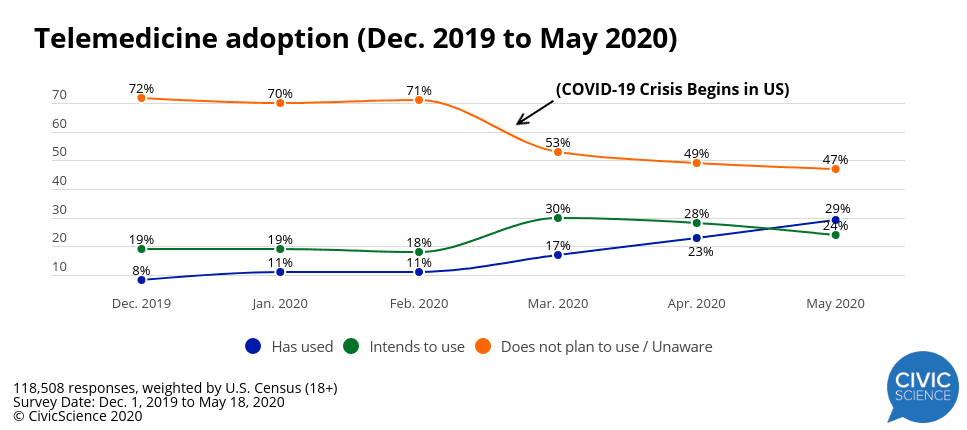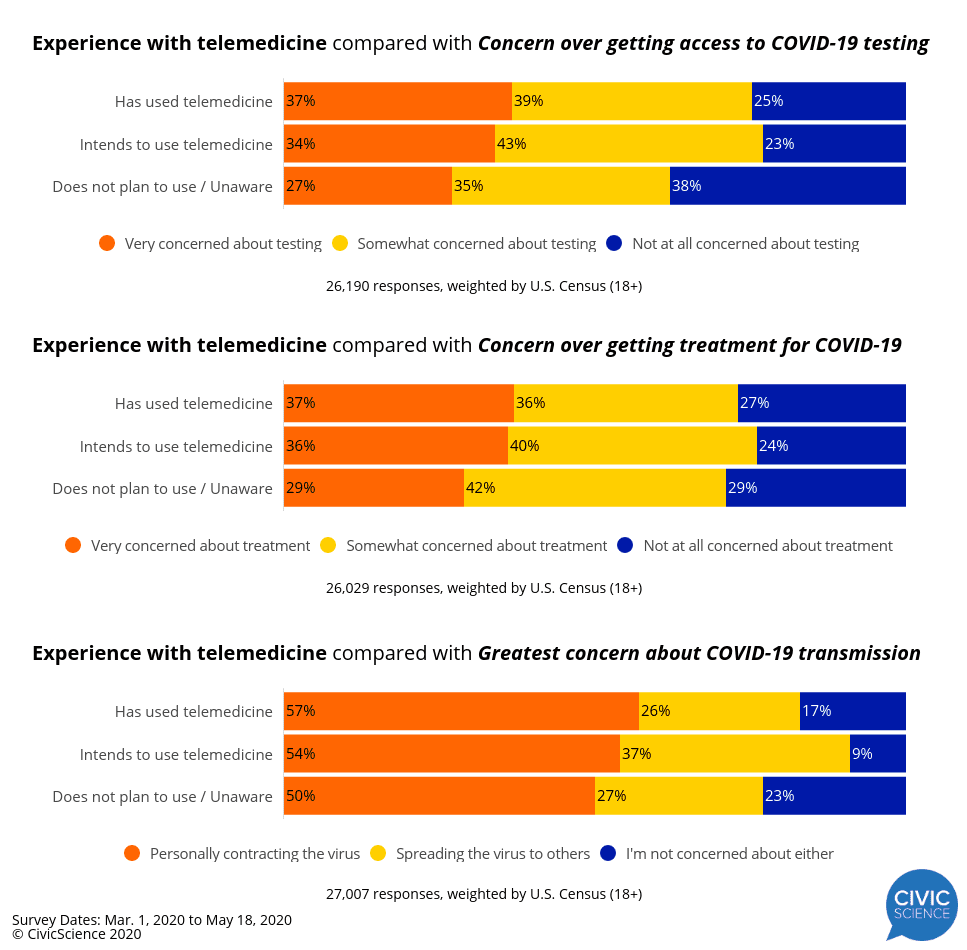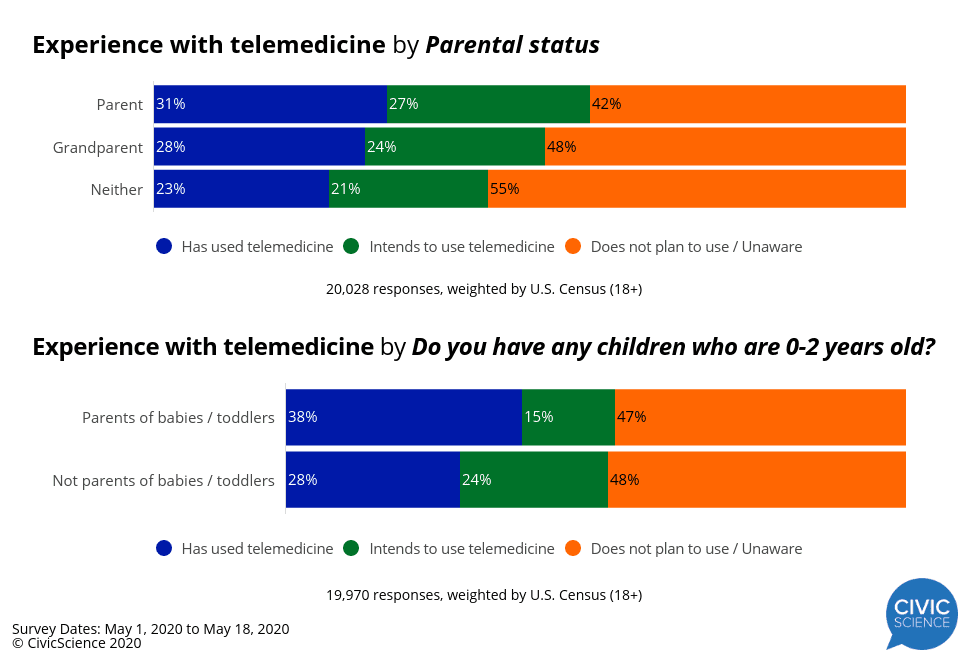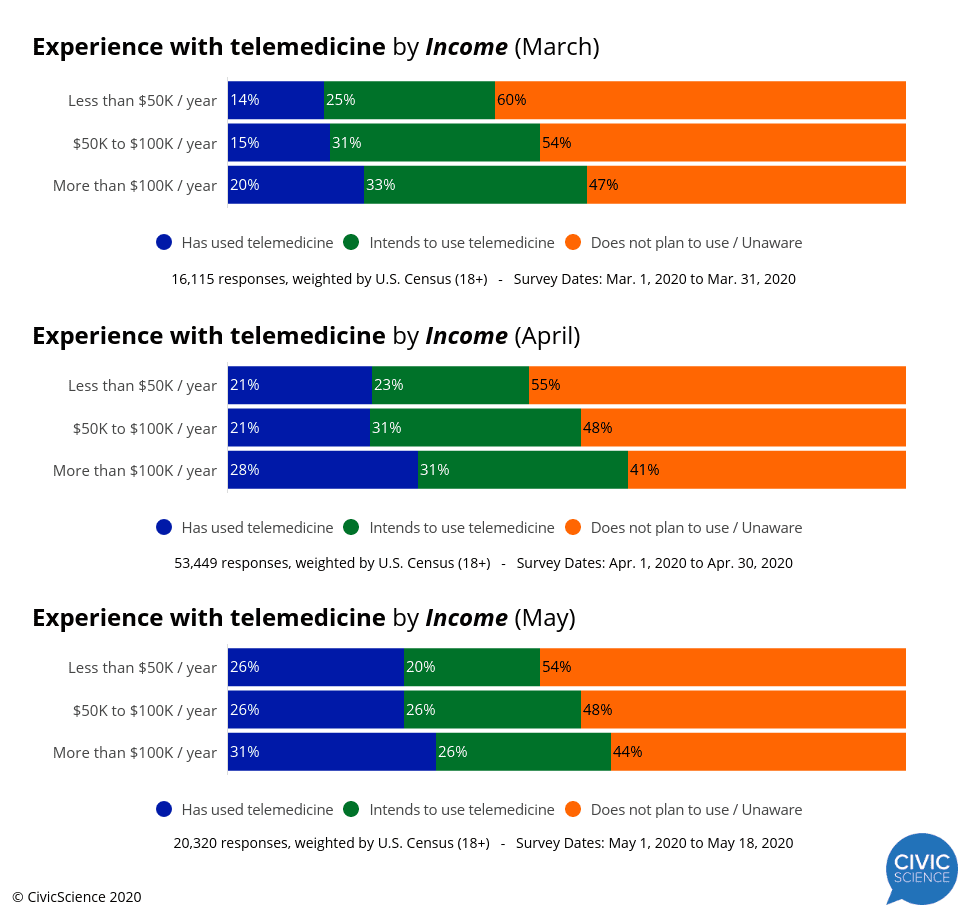Editor’s Note: This article was one in an ongoing series of CivicScience studies on telemedicine during the COVID-19 pandemic. For the latest research into telemedicine use, click here.
As the coronavirus pandemic continues to keep Americans wary of going into the doctor’s office, it seems that more and more U.S. adults are turning to telemedicine for their healthcare needs.
According to an ongoing CivicScience survey, 29% of U.S. adults surveyed in May said that they had tried a remote appointment with a health professional. That’s an increase of 6 percentage points from April, and a massive rise of 18 percentage points since February, before the pandemic struck the U.S. in earnest.
Another 24% of U.S. adults now say they plan to try remote healthcare, while a new low of 47% say they either haven’t heard of it or don’t intend to try it. Satisfaction with telemedicine seems to be holding steady during the pandemic: In March, April, and May, more than 70% of those who’ve tried it reported a positive experience.
Since March, telemedicine use has had a strong correlation with one’s level of concern about getting access to both COVID-19 / coronavirus testing and treatment. These groups (adopters and intenders) also tend to be more concerned about either personally contracting the virus or spreading it to others.
Parents are also much more likely than non-parents to say they’ve used or intend to use telemedicine. This could be related to the difficulties involved in getting children (particularly sick ones) to the doctor’s office. This goes especially for parents of babies and toddlers, who’ve adopted telemedicine at a whopping 38% rate.
Democratization
The adoption of telemedicine is also gaining steam among lower-income groups that had previously rejected the practice. While the highest earners (those in households earning more than $100K / year) remain the most likely to have used telemedicine or intend to use it, lower earners are catching up.
A similar pattern emerges when we look at telemedicine use by age. While Gen X has always led the way in adoption and intent, Baby Boomers have caught up while Millennials have more-or-less kept pace.
Interestingly, Gen Z is something of an outlier in terms of adoption. This age cohort saw a rise in adoption of only 5 percentage points from March to May, while every other generational group saw a rise of at least 9 percentage points. Adoption among Baby Boomers more than doubled.
This telemedicine anomaly among 18- to 24-year-olds could be due to the younger generation simply requiring healthcare services less often; however, Gen Z also has the lowest intent to use telemedicine in the future. A CivicScience study in October found that Gen Z craves personal interaction when using financial services; perhaps the same could be true of medical services. It’s something to keep an eye on as the telemedicine trend continues to expand rapidly among Americans of all stripes.













